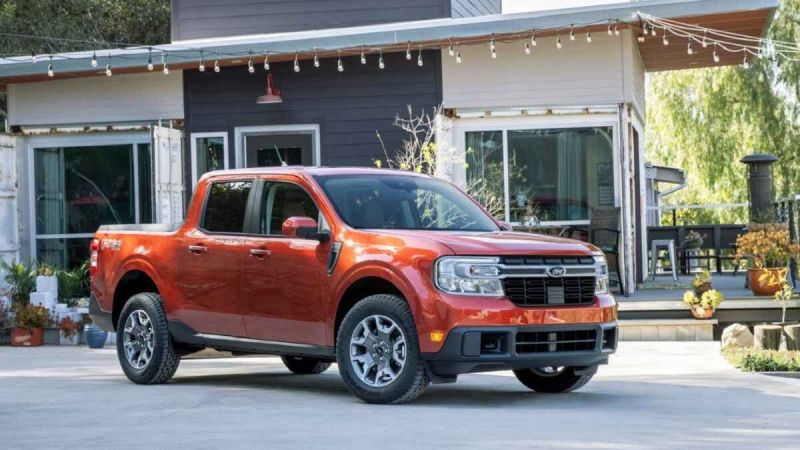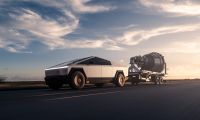With winter unofficially-officially having begun in the last couple of weeks, it’s a good time to check and see if the equipment on your vehicle is in good shape. What equipment are we talking about? Here’s a list:
- Tires
- Windshield wipers
- Brakes
- Battery
- Lights
- Defroster/climate control
- Heater
- Exhaust system
- Transmission
Let’s look at each item separately with a couple of comments.
Tires
If your vehicle’s tires have been on their wheels for more than four years, it is a good idea to take a close look at each one. The reason is simple: over time, each tire ages because it is exposed to not only the slams and bangs of everyday driving (things like potholes, irregular surfaces, and the like all take their toll). And then there’s exposure to air pollution which can attack and weaken the overall structure of the tire. Believe it or not, exposure to sunlight and ozone daily can oxidize a tire’s carcass, quickly leading to failure. If your vehicle’s tires are approaching seven years old, replacing them is a good idea. Not only is the tread likely to be less than one-sixteenth of an inch deep (the point where the tire’s warning bars appear across the tread), but at seven years, tires can fail because of sidewall failure due to cracking. Yes, a new set of tires is expensive (upwards of $1,200 for four decent all-weather tires), but they are vital. The new tires are safer and more economical because there’s less rolling resistance, so the fuel economy is better.
Windshield wiper
Imagine driving your Ford Mustang into a white-out with wipers smearing the snow and ice that may be sticking to the windshield. As the wipers smear back and forth – instead of cleaning – you will likely find that you have less and less visibility. This is the situation if your vehicle’s wipers are more than a year old. To test your wipers, pull your vehicle into a heated garage, turn off the engine, but leave it keyed on, throw some water at the windshield or use the windshield washers and see if the windshield is clear. If it isn’t, replace the pair or wipers. The wipers can sometimes look like they are functioning correctly because the smearing isn’t bad. However, if you look closely, you may see the edges of the wipers fraying towards the tips. In that case, you have to replace the wiper blades, too. As a general rule of thumb, if your wipers are more than a year old, they should be replaced.
Brakes
The brakes are one of the most critical safety systems for your car. Not only are they important as a standalone system, but they are also critical to the safety of your vehicle’s intelligent safety braking system. Indeed, they are also key to the vehicle’s intelligent cruise system as they work with the vehicle’s computer system to implement the intelligent cruise system, which is an essential addition to your vehicle’s safety inventory. Generally, checking your vehicle’s brakes before each primary season would be best to ensure you are ready for any driving condition. If you hear grinding or metal-on-metal sounds from the front or rear wheels or your vehicle pulls to one side, you should have the brakes checked and replaced. By the way, the correct way to brake in THE snow with today’s intelligent braking systems is to apply light pressure to the pedal after removing your foot from the accelerator. The safety systems that work with the anti-lock braking systems will help you keep your car under control so you can get out of skidding or other snow-related problems. If your vehicle is equipped with a continuously variable transmission like the Ford Maverick Hybrid, you will also notice the transmission helping to slow and stop your vehicle.
Battery
The battery is a crucial vehicle system as it powers everything from your vehicle’s headlights to its electronic and infotainment systems to its safety systems. Besides, it starts your vehicle, even if you never look at an ignition keyfob. If your vehicle’s battery is more than six years old, you should replace it. It is conceivable that you might be able to push the battery to seven years, but you are taking chances with a device that could leave you sitting in the middle of nowhere.
Lights
In foul weather, the ability to see and be seen is crucial. The lights are central to this. For example, if you have a problem with the headlights, you won’t be able to see the road ahead after dark. This is a dangerous situation. Indeed, it’s also a key to others seeing your vehicle during the day. It is why daylight-running systems (DRS) were implemented in the 1990s. Before the winter gets started, it is an excellent idea to check out all the lights on your vehicle front and rear. To check out the headlights, pull into a garage and, with the motor off, shine the headlights on the rear wall. You should see both headlights on the wall, illuminating evenly. Check the high-beam switch to ensure you have full vision late at night or on dark roads. Have someone watch the rear lights to be sure they are on. As they are part of the DRS, the taillights should always be there. Check the turn signals and flashers to make sure they work. If these lights fail, take the car to your mechanic or a dealer to replace the particular bulbs. If you feel comfortable doing this, swap out the bulb or lighting element yourself. You can find the proper bulb or assembly at any auto supply shop.
Heater/defroster/climate control
Since these systems run and are usually needed simultaneously – even with temperatures below 32 degrees Fahrenheit – it pays to check them out. The defrosters are needed when the temperature dips and the cold has settled in. The heater is necessary because driving a vehicle in icy conditions can be dangerous. The climate control panel or system enables you to tailor the climate needs of your vehicle’s interior. To check the system, put the climate control panel through its paces, and on the next day, when you need defrosters, be sure that they clear your windshield (it’s a good idea to make sure all the vents are free of any blockages and that they put out heat when you need them. Have a mechanic check out if there is a problem with your defrosters or upper heating systems.
Exhaust system
A working exhaust system is another essential feature you must check out. If the exhaust system is broken, you risk letting carbon monoxide into the vehicle’s cab. This can be fatal if it isn’t fixed. There’s an easy way to make sure your exhaust system is working from the manifold to the tailpipe. Indeed, this was one of the first tricks I learned in auto maintenance. The check is quick, and it involves a heavy rag. To do this, check the following:
- Park your vehicle and set the parking brakes
- Let the vehicle warm up for a bit
- Go to the tailpipe
- Place the heavy rag over the tailpipe (be sure you are standing to the side)
- Feel the exhaust pulses; they should be even and steady
If the exhaust pulses are uneven or the rag is left with carbon smudging, a problem with the system should be checked out by a professional. One way to tell there is a problem, as well, is by holding the rag over the tailpipe and listening for a telltale hiss. This indicates there is a leak somewhere in the exhaust. Have your mechanic check this out and fix it.
Transmission
This is one check that the vehicle will help you with. On today’s dashboards or vehicle information systems, you will see a pictograph of a vehicle skidding. If you see this lit, the skidding control system isn’t working. The problem could be in the transmission or the software. Since this system also controls intelligent ABS and cruise control, you have to have it checked out. Also, if your vehicle hesitates when you accelerate, it could mean a problem somewhere in the driveline must be looked at and repaired.
These are a few checks you should do before the winter advances further. You may even think of more. If you do, pass them along, and Torque News will run another article featuring your suggestions.
Marc Stern has been an automotive writer since 1971 when an otherwise normal news editor said, "You're our new car editor," and dumped about 27 pounds of auto stuff on my desk. I was in heaven as I have been a gearhead from my early days. As a teen, I spent the usual number of misspent hours hanging out at gas stations Shell and Texaco (a big thing in my youth) and working on cars. From there on, it was a straight line to my first column for the paper, "You Auto Know," an enterprise I handled faithfully for 32 years. Not many people know that I also handled computer documentation for a good part of my living while writing YAN. My best writing, though, was always in cars. My work has appeared in Popular Mechanics, Mechanix Illustrated, AutoWeek, SuperStock, Trailer Life, Old Cars Weekly, Special Interest Autos, etc. You can follow me on: Twitter or Facebook.












